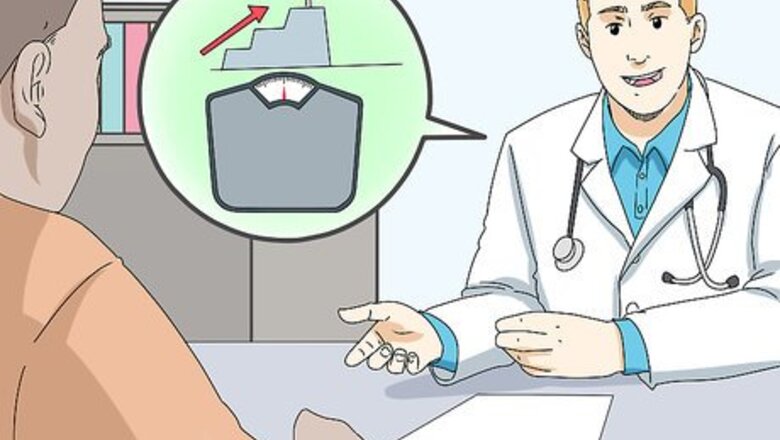
views
Performing the Best Workouts
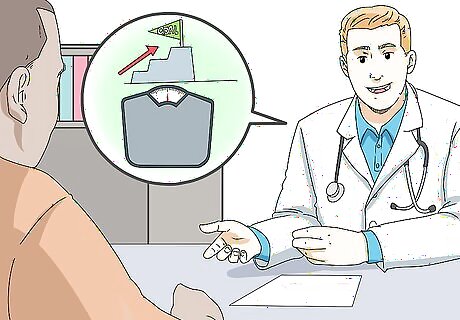
Talk to your doctor to determine a healthy weight-loss goal for you. Although many people want to lose weight, not everybody actually needs to. Your doctor will be able to tell you what a healthy weight range would be for you, based on your particular physical characteristics. Use this information to set a healthy weight for yourself that you’d like to reach. For example, if your doctor tells you that a healthy weight range for you would be 150 to 160 pounds (68 to 73 kg), set a goal for yourself to eventually weigh 155 pounds (70 kg). Don’t try to lose more than 2 pounds (0.91 kg) a week; this is not only unrealistic for most people, but it also makes you more likely to regain the weight you lost later. Ideally, you should aim to lose 1 pound (0.45 kg) a week overall.
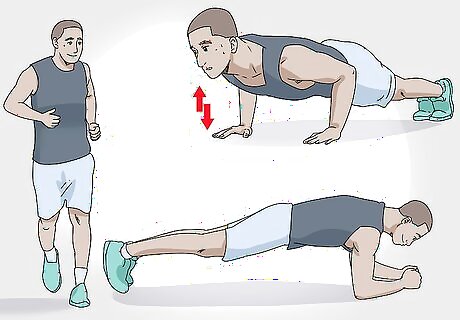
Use push-ups, planks, and jogging to assess your fitness level. To test your muscular strength and endurance, perform as many push-ups as you can before you have to stop and rest. See how long you can hold a plank to test your abdominal muscle strength. Finally, time how long it takes you to complete a 1.5 mi (2.4 km) run to gauge your aerobic fitness. Use the results of these tests to determine how intense your initial workouts at the gym should be. A healthy 25-year-old man should be able to jog 1.5 miles (2.4 km) in 11 minutes and perform 28 push-ups in a row. A healthy 25-year-old woman should be able to jog 1.5 miles (2.4 km) in 13 minutes, perform 20 push-ups in a row. Most healthy people should be able to hold a classic front plank for 1-2 minutes. Planks are a safer and more effective alternative to crunches or situps for building and gauging abdominal strength. People over or under the age of 25 will have less intense benchmarks for gauging their particular fitness level.
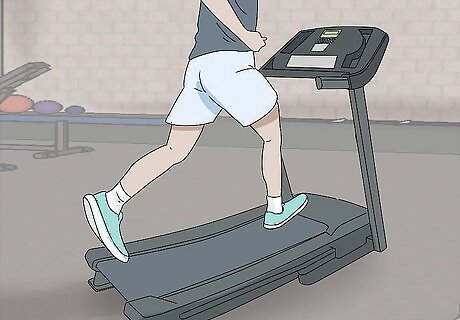
Run on the treadmill without holding onto the handles. Running or walking on the treadmill is one of the best ways to burn fat at the gym, since you already know how to walk or run. However, you need to actually bear the brunt of your bodyweight in order to effectively burn calories. Avoid holding onto the handles while you run, if you can. A good workout to perform on the treadmill is to run at a moderate intensity for about 30 minutes. You may be able to burn fat even more efficiently by varying the intensity of your run over 20-30 minutes. This is called interval training. If this workout is too intense for you, decrease your speed to a more comfortable pace. If you want to increase the intensity, try running at a faster speed or at a bit of an incline. You should generally only grasp the handles if you’re having trouble staying upright. However, if you are having trouble staying up, you need to get off the treadmill immediately and get help from a member of the gym staff.
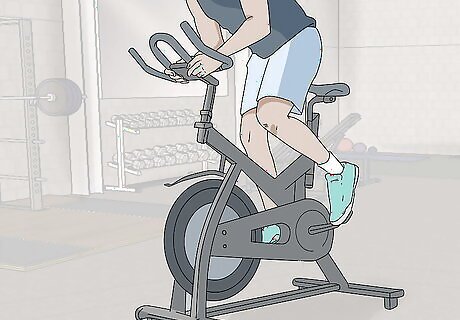
Perform high-intensity intervals on a stationary bike. Do a couple of minutes of high-speed cycling, followed by a couple of minutes of slower cycling. Repeat this process over the course of a 30-minute workout for an efficient calorie burner. This is an especially useful workout if you suffer from joint pain, since there’s less impact on your knees.
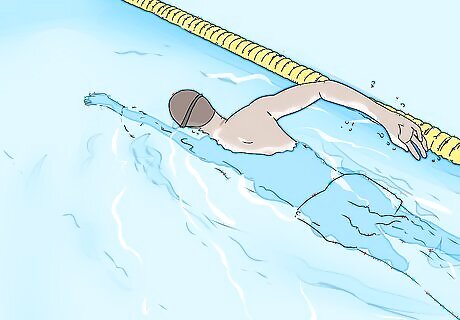
Swim laps or tread water in the pool if your gym has one. Just treading water is a good workout, since your muscles are constantly fighting against gravity to keep you afloat. For a more intense workout, swim laps at a relatively fast speed for as long as you can. Be sure to change your stroke style every couple of laps. For example, if you just swam 2 laps using a breaststroke, do the next 2 laps with a butterfly stroke. Don’t swim as fast as you possibly can, at least not all the time. Just like with running, aim for an intense but tolerable pace that you can sustain for at least 30 minutes, if not an hour.
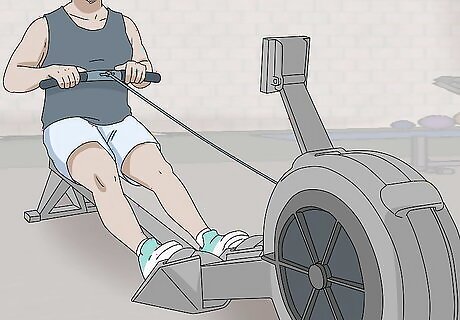
Use the rowing machine to engage most of your body’s muscles. Row a set distance (e.g., 250 metres (0.16 mi)) as fast as you can, then slow down for 1 minute. Repeat this process over a 30-minute workout period. This is a very good machine for working out your arms and back as well as your leg muscles.
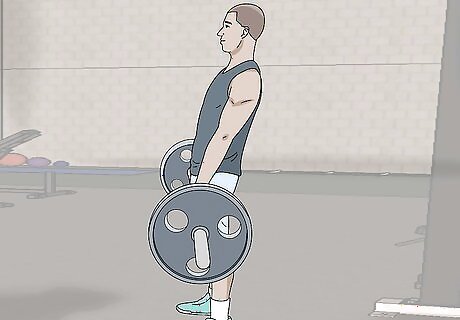
Lift heavy weights to build muscle and increase your metabolic rate. Start out with weights that you can lift 8-12 times without having to strain too hard. Then, gradually work your way up to heavier weights over the course of several workout sessions. Taking this type of gradual approach will dramatically reduce the risk of injury as you build more and more lean muscle. Although it may seem counterintuitive to build muscle if you’re trying to lose weight, the added muscle mass will increase the amount of calories you burn while you’re resting. This means you’ll burn more fat over time, even as you gain a little extra muscle weight.
Taking Advantage of Other Gym Resources
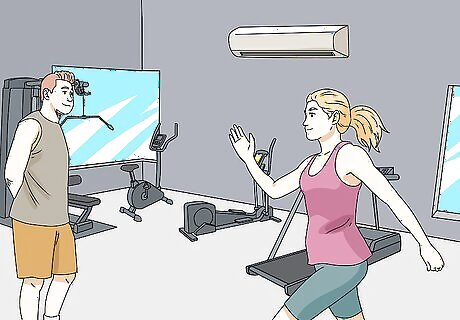
Work with a personal trainer, if your gym offers this service. The guidance and feedback you’ll get from working out with a professional trainer will help you to avoid using improper form or even injuring yourself. Ask a staff member at your gym if there are trainers on staff that you can work with. If your gym doesn’t offer a training service, ask a staff member if the gym would allow you to hire an outside fitness coach and have them work out with you at the gym. Most gyms these days offer some form of fitness training. However, many of them will also charge a fee for these services.
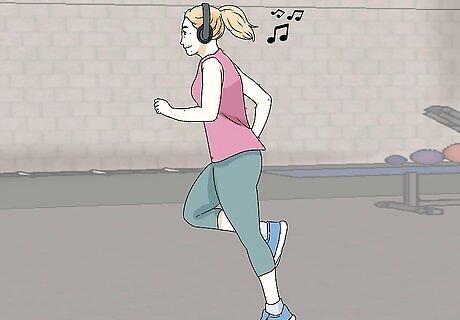
Opt for workouts that you enjoy doing. This will make it much easier for you to stick to an exercise routine, since you’ll actually want to do these workouts. If there are some workouts you hate doing but still want to incorporate into your weekly routine, try to find ways to make them more enjoyable. For example, if you hate running on a treadmill, listen to really upbeat music or an interesting podcast while you run. If possible, ask a friend to go to the gym with you. Exercise is nearly always more enjoyable when you do it with someone else.
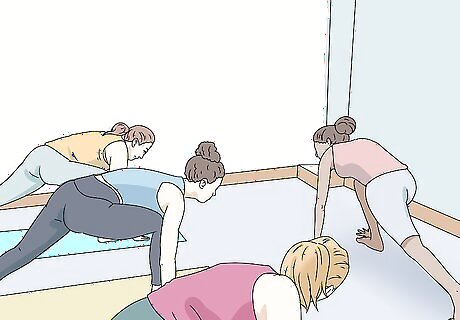
Sign up for group classes to work out with other members of your gym. Enroll in a class for a workout you already do, as well as a class that looks interesting and that you haven’t tried before. This will allow you to conveniently introduce yourself to a new workout in an encouraging environment. Furthermore, working out with others tends to make going to the gym a lot more fun than exercising alone! For example, sign up for a beginner’s yoga class if you’ve never done yoga before. You’ll probably find it engages a lot of muscles that you haven’t been able to work out with other forms of exercise. Sign up for a class at your gym that includes the workouts you dislike. You may find that performing these exercises in a group or under the guidance of a trainer makes them easier to complete.
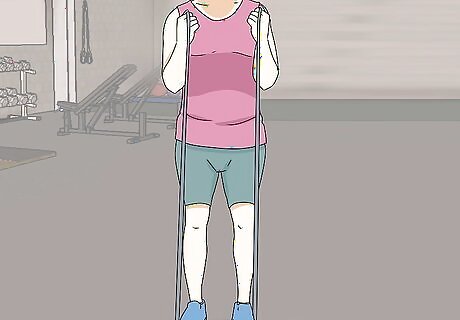
Use resistance bands to strengthen your muscles. Resistance bands are a very versatile tool, available at most gyms, that allow you to work out both your upper body and your lower body. Grip the handles of the resistance band while either stepping on it or having it tied to a sturdy pole to use the resistance to strengthen your muscles. For example, if you want to work out your arm muscles, stand on the resistance band and pull upwards on it with your arm to work your biceps and forearm.
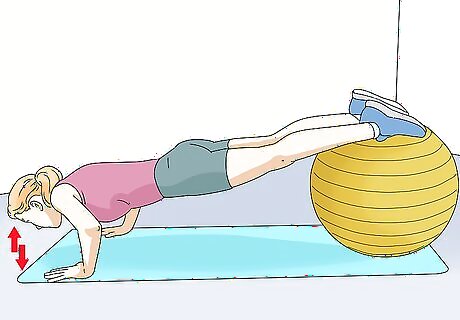
Incorporate a balance ball into your full-body workouts. Balance balls are large inflated balls that you can use to either prop up part of your body or to provide added resistance to a workout. Add a balance ball to a workout that you already do to make it more difficult and push your muscles a bit harder. For example, if you’re already doing push-ups on a regular basis, try completing push-ups with your feet propped up on the balance ball. You’ll find that they’re a lot more difficult to complete this way! You can use the balance ball to make squats, planks, back extensions, situps, and curls more difficult.
Sticking to an Exercise Routine
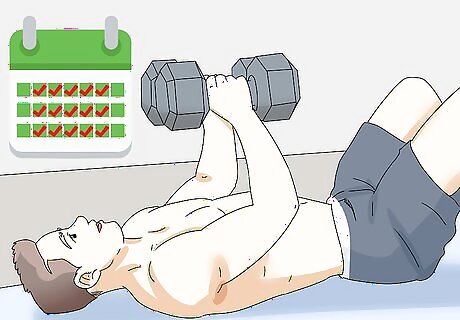
Do intense workouts at least 5 days a week. Exercising on a routine basis is the best way to ensure that your workouts will lead to weight loss over time. If you’re just starting out, exercise 3 days a week at first, then gradually increase your routine to 5 days a week. Your workouts should be intense enough that you feel at least slightly exhausted at the end of them. Avoid doing any of your exercises at a “leisurely” pace. Push yourself in every workout you do, but be careful not to hurt yourself. An injury may seriously derail your weight-loss efforts.
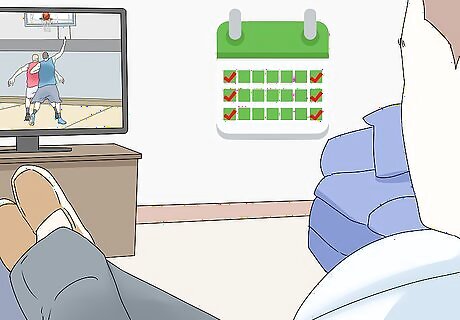
Give yourself 1-2 days of rest a week. Each muscle group you exercise needs 24-72 hours of recovery time between workouts, so plan out your resistance training sessions so that each muscle group has some time to rest. You need to allow yourself time to mentally and emotionally recover, as well. This is very important for being able to stick with your routine over the long haul. Stay active on your rest days, even though you’re not going to the gym. Don’t just spend the whole day on the couch! Go run errands or take a walk around your neighborhood to keep yourself moving. If any of your muscles are painfully sore after a full day of rest, avoid working out those muscles again until the pain is mostly gone.
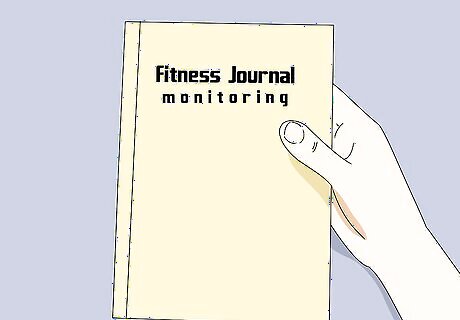
Use a fitness journal to track your progress every week. If you can, use a smartphone app to keep track of the workouts you have done. Every time you perform a particular workout, refer to this journal and aim to do a little bit more than you did the last time you did this workout. Measure your weight each week and write it in this app as well. For example, if you did 2 sets of 5 reps on a particular machine at the gym, try to do 2 sets of 6 reps this time. Being able to refer to this journal will also help you to stay motivated by reminding you of how much progress you’ve made. If you don’t have a smartphone, use a small notepad and pen to conveniently keep track of this information at the gym.
Following a Proper Diet
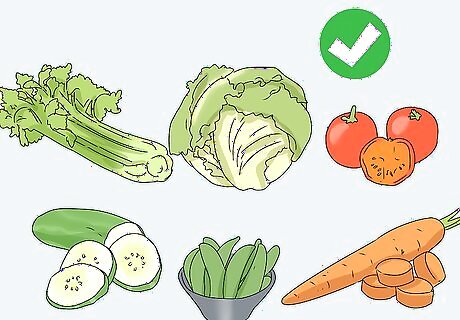
Eat fewer calories to maintain an energy deficit. Ultimately, losing weight is all about burning more calories through diet and exercise than the amount that you take in. Calculate your Basal Metabolic Rate (BMR) to determine how many calories you should be eating every day. Then, aim to eat about 500 calories less than that. For men, the BMR formula is: 66 + (13.8 x weight in kg.) + (5 x height in cm) - (6.8 x age in years). For women, the BMR formula is: 655 + (9.6 x weight in kg.) + (1.8 x height in cm) - (4.7 x age in years).
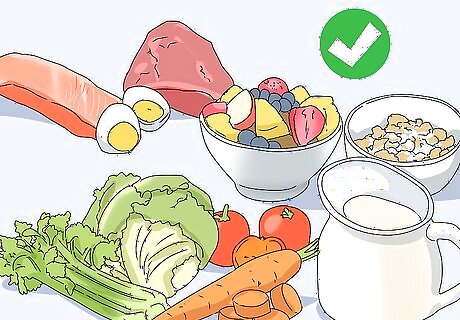
Maintain a balanced, nutritious diet. Eat something from each of the 5 food groups (protein, vegetables, fruits, dairy and grains) every day, along with healthy fats and limited amounts of sugar. Avoid processed or otherwise unhealthy food as much as you can, only indulging in these foods every once in a while. Be sure to drink plenty of water every day, as well. This will help you to stave off hunger and stick to a healthy diet. Measure your portion sizes so that you’re not overeating during your meals.
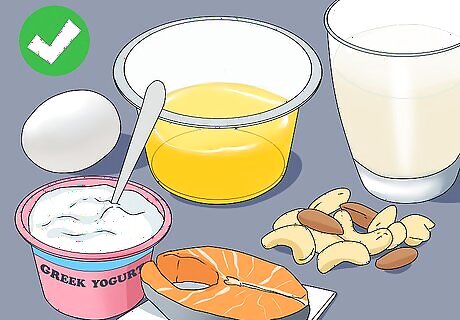
Be sure to get enough protein to build muscle. All of your exercises won’t amount to much if your body doesn’t have the protein it needs to rebuild the muscles you’re destroying at the gym. Aim to consume about 1.5 grams (0.053 oz) of protein for every 1 kilogram (2.2 lb) of body weight every day. Some of the best sources of lean protein to eat after a workout include Greek yogurt, egg whites, fish, milk, and nuts. If you’re vegetarian or vegan, nuts and tofu are your best bets for getting enough protein after your workouts.




















Comments
0 comment